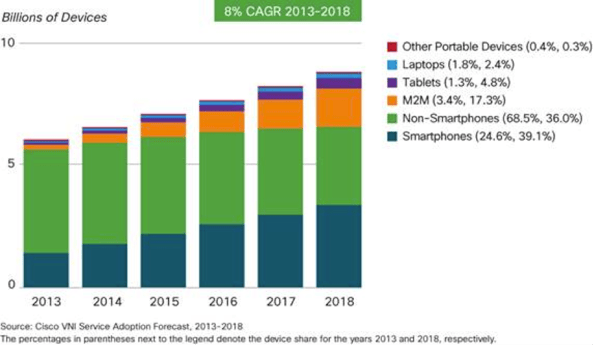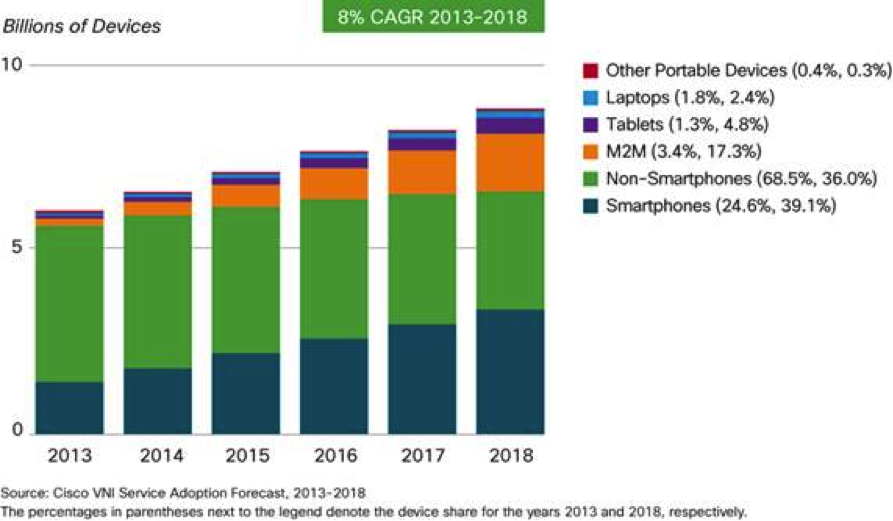According to Dimension Data’s recent Contact Center benchmarking report, digital channels (email, web chat, social media, SMS text, video chat), which currently account for roughly 35% of contact centers’ total interactions, are expected to overtake voice within the next two years. The catalyst?—the widespread adoption of Internet-connected mobile devices. Consider the following: by 2018, Cisco predicts that the number of mobile devices used by consumers will grow close to 8 billion.

And as the usage and adoption of laptops, tablets, smartphones, and other Internet-connected devices continues to grow, so will customer expectations. But despite the fact that mobile customer service strategies are a relatively new concept to many organizations, customers expect the same, if not enhanced levels of service across all channels, whether they’re using voice, chat, or video. Earlier this year, Gartner released some key findings from its research on mobile customer service, which can be summarized in the following three points.
1) By 2017, one third of all customer service interactions will still require the support of a human intermediary.
The widespread adoption of mobile devices has facilitated customers’ ability to service their own needs online via self-service channels, or through other lower cost means. And as a result of this, some fear that customer service representatives will eventually be displaced—but this is simply not the case. Gartner predicts that by 2017, approximately one third of all customer service interactions will still require the support of a human intermediary. And despite the fact that many interactions initially begin through a digital or self-service channel, they are often escalated to voice once the issue becomes more complex. There is and will always exist a need for live assistance—and we do not expect that to change. Businesses should continue to invest in their human capital just as much as digital and self-service channels.
2) By 2018, five percent of customer service cases will be initiated on Internet-connected devices, up from 0.02 percent in 2014.
Within a four-year time span, the number of customer service cases initiated on Internet-connected devices is expected to grow significantly, largely due to the fact that the adoption of these devices is quickly expanding. And as this occurs, businesses need to ensure not only that they have the infrastructure in place to handle omni-channel customer journeys, but also that they have the right strategies and business processes in place to deliver on customer expectations. All digital channels should be integrated with each other as well as with any database management system, allowing for seamless transitions from one channel to another. Agents should also be properly trained on how to use every channel, as well as when to escalate an issue from one channel to another.
3) More than 100 of the 500 largest global businesses will introduce video-based chat by 2018 for customer-facing interactions.
Fueled in part by the growing adoption of mobile devices and increasing demand for fast customer support, the introduction of video as a customer service channel is on the rise, expecting to double between now and 2018. But as many businesses attempt to first tackle the task of improving service within their existing channels, many have not yet given video-based service much thought—but they should, as it has shown to drive sales, conversions, and customer satisfaction. A relatively new technology that supports browser-to-browser applications for voice calling, video chat, and file sharing without the need for internal or external plugins, WebRTC is revolutionizing the communications space, allowing consumers to bypass the costs associated with traditional telephony carriers. With more than 6 Billion WebRTC supporting devices expected to exist by 2019, this is something every business should consider adopting in the near future.





